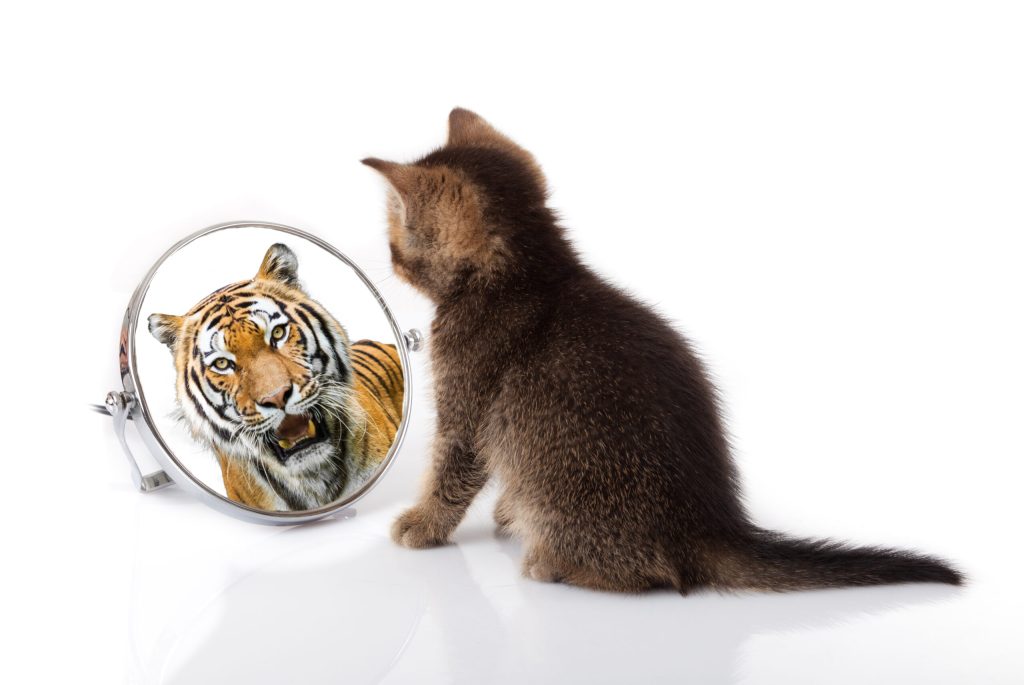Effective Cat Behavioral Training Strategies Tips for Nigerian Owners

As cat ownership continues to rise in Nigeria, understanding how to train and manage our feline friends has become increasingly vital. Many owners face challenges in fostering good behavior, which can lead to frustration for both the pet and the owner. By applying effective cat behavioral training strategies, you can create a harmonious living environment.
For Nigerian cat owners, exploring these approaches is not only beneficial but essential for developing a strong bond with your pet. Here are some key aspects to consider:
- Understanding Feline Behavior: Recognizing the natural instincts of cats can greatly enhance your training efforts.
- Positive Reinforcement Techniques: Reward-based methods encourage desired behaviors and strengthen your relationship.
- Consistency is Key: Establishing a routine helps cats learn more effectively and reduces confusion.
In this article, we will delve into the Top 5 Strategies that can transform your cat’s behavior and make training a more enjoyable experience for both of you. Get ready to enhance your sweet companion’s life while discovering new techniques that work for you!
YOU MAY ALSO LIKE: Read this other article
Effective Behavioral Training Strategies for Cats: Tips for Nigerian Cat Owners
Training a cat can initially seem as mysterious as the animal itself, given their notorious reputation for independence. Unlike dogs, which have long been bred for specific tasks and human companionship, cats have maintained more of their wild instincts. However, this does not mean that they cannot be trained. Behavioral training of cats is not only possible but also beneficial for fostering a deeper connection between these feline companions and their Nigerian owners. Implementing effective strategies ensures a harmonious relationship where both the cat and owner thrive. Let’s delve into five strategies tailored for Nigerian cat owners to improve their pets’ behavior and enhance their everyday coexistence.

5. Positive Reinforcement
Positive reinforcement is a strategy that leverages the natural behavior of cats, encouraging desired actions through rewards. Unlike dogs, who respond well to hierarchical commands, cats respond better to rewards. When Nigerian cat owners use positive reinforcement, they can effectively guide their feline’s behavior with patience and consistency. This approach involves the following steps:
- Immediate Reward: The timing of the reward is critical. Offering treats like sardines or chicken pieces immediately after the cat uses the litter box helps reinforce the behavior.
- Verbal Praise: Employ gentle, soothing words when the cat engages in positive behavior such as using a scratching post instead of scratching furniture.
- Engaging Playtime: Providing a favorite toy or engaging in interactive play after the cat responds to its name can be incredibly rewarding.
Positive reinforcement works by consistently associating good behavior with positive outcomes, which gradually conditions the cat to repeat these behaviors. A noteworthy tip is to remain consistent—rewarding the cat right after the behavior ensures they make the correct association.
4. Clicker Training
Clicker training is a focused version of positive reinforcement that uses auditory signals to mark desirable behavior. It harnesses the cat’s ability to make quick associations and is particularly effective for owners who wish to teach their cats more complex behaviors or tricks.
- Selecting a Clicker: Choose a clicker that creates a clear, sharp sound. Once chosen, always have it and your treats ready during training sessions.
- Timing is Key: Click at the moment the desired behavior occurs, followed immediately by a treat, so the cat connects the sound to the reward.
- Short Sessions: Cats have relatively short attention spans. Limit clicker training to a few minutes per session to keep the cat engaged and prevent frustration.
Clicker training is advantageous because cats quickly learn to associate the click with a positive reward. Over time, this develops a strong communication channel between the owner and the cat, promoting efficient learning.
3. Setting a Routine
Cats are creatures of habit, thriving in environments where they can predict outcomes and routines. Establishing a stable, predictable routine not only develops trust between the cat and owner but also enhances the cat’s behavioral consistency.
- Consistent Feeding Times: Prepare meals at the same time each day to create a reliable feeding routine, reducing anxious meowing or pestering.
- Regular Play Intervals: Allocate specific times for play to help expel excess energy. Varied toys and activities can make these sessions exciting.
- Secure Retreat Areas: Provide a quiet, designated area where the cat can feel safe and retreat when needing rest or a break from household commotion.
Incorporating these routines helps reduce anxiety-related behaviors. A predictable environment fosters a sense of security, necessary for a cat to feel and behave optimally.
2. Socialization and Exposure
The importance of socialization for cats is often underestimated. In more bustling or populated environments, such as many Nigerian households, gradual socialization can help prevent stress-induced aggression or anxiety.
- Introduce Gradually: Sequentially introduce the cat to new family members and friends, ensuring the process is slow and calm.
- Controlled Exploration: Allow your cat to explore new rooms or outdoor environments safely using a harness for short, supervised visits.
- Interaction with Pets: If you have other pets, provide structured, gradual interactions to foster positive relationships.
This exposure to diverse stimuli not only mitigates fear-based responses but also cultivates an adaptable, confident cat ready to integrate into larger social settings.
1. Patience and Consistency
Without a doubt, patience and consistency form the bedrock of successful cat training. Unlike dogs, whose desire to please often speeds learning, cats require an owner to appreciate their slower, more independent nature.
- Small Wins: Celebrate even minor progressions—each step forward is a sign of growing trust and understanding.
- Consistency in Commands: Always use the same words and tones to avoid any confusion during training, facilitating quicker and clearer communication.
- Avoid Punishment: Negative reinforcement can harm the bond between you and your cat, leading to fear and anxiety rather than compliance.
Remember, each cat is unique, with evolving personalities and learning paces. Developing an intuitive understanding of these aids owners in creating an environment where positive behavioral changes are not only encouraged but celebrated.
By embracing these training strategies—positive reinforcement, clicker training, routine setting, socialization, and patience—Nigerian cat owners can embark on a promising journey of companionship. Training is not merely about behavior modification; it’s about deepening the bond with a cherished feline friend and enhancing their well-being in a loving home environment.
| Training Techniques | Benefits |
|---|---|
| Positive Reinforcement | Promotes a strong bond between the cat and owner, as cats respond positively to rewards, leading to better behavior. |
| Clicker Training | Offers clear communication, as the click sound signifies a job well done, helping with misunderstanding in commands and encouraging quick learning. |
| Consistency in Commands | Helps the feline grasp desired behaviors, making it easier for owners to train their cats efficiently with less frustration. |
| Socialization Opportunities | Encourages interaction with other pets and humans, leading to more well-adjusted cats that are comfortable in various environments. |
The practice of effective behavioral training for cats, especially for Nigerian owners, is vital in ensuring that their feline companions lead happy and manageable lives. Adopting techniques such as positive reinforcement, incorporating tools like clickers, and emphasizing consistency can significantly improve the training experience.Positive reinforcement is exceptionally effective because cats are naturally curious and can learn behaviors when a reward accompanies specific actions. Giving treats, praise, or even playtime reinforces desired behavior and makes training enjoyable for the cat. Clicker training, a form of operant conditioning, utilizes a distinct sound to signal success, streamlining the training process and providing clear feedback.Moreover, establishing a routine with consistent commands enables clear communication, crucial for effective training. By using the same words and gestures consistently, owners can prevent confusion and enforce learned behaviors more efficiently. This consistency is not only beneficial for cat training but also fosters a stronger bond of trust between the owner and the cat.Socialization is another critical factor that underpins the behavioral training of cats. Providing opportunities for interaction with other pets and people can prevent anxiety-driven behaviors that arise from isolation or fear. A well-socialized cat is typically more adaptable and exhibits better overall behavior.Each training method requires patience and understanding from the owner, but the results yield a well-behaved feline companion, enriching the lives of both the pet and the owner. Therefore, adopting these effective training strategies can lead to a harmonious environment where cats thrive, and their owners enjoy the companionship they provide.
SEE ALSO: Click here to read another article
Frequently Asked Questions About Behavioral Training Strategies for Cats
What is the first step in training my cat to behave better?
The first step in training your cat is to understand its unique personality and behavior patterns. Each cat is different, and identifying their triggers and preferences can help tailor an effective training plan. It is essential to begin with positive reinforcement methods, such as rewarding your cat with treats or praise for desired behaviors. Consistency is key, as cats respond well to a routine. Start with small steps and gradually increase the complexity of tasks as your cat becomes more comfortable.
How can I discourage my cat from scratching furniture?
Cats naturally scratch to mark their territory and maintain healthy claws. To discourage furniture scratching, provide them with acceptable alternatives like scratching posts or pads. Place these near the areas they like to scratch and reward them with treats when they use the new options. Additionally, consider using deterrent sprays on furniture to make these surfaces less appealing. The goal is to redirect their instinctual behavior in a way that satisfies both the cat and the owner.
Is it possible to train a cat to use a litter box if they are accustomed to going outside?
Yes, it is possible to train a cat to use a litter box even if they are used to eliminating outside. Start by placing the litter box in a quiet, easily accessible location. Gradually encourage your cat to explore the new environment and reward them with treats and affection when they use the litter box. Maintain a clean and odor-free litter box to make it appealing, and consider using a type of litter that mimics natural ground, such as sandy textures, to ease the transition.
How can I address aggressive behavior in my cat?
Aggressive behavior in cats can stem from fear, anxiety, or territorial instincts. To address this, observe your cat’s triggers and work to alleviate their stressors. Introducing calming aids, such as feline pheromone diffusers, can help create a serene environment. Training sessions focusing on positive interactions and gradual exposure to stressors can also reduce aggression. It is crucial to never punish your cat, as this can exacerbate the issue. Instead, focus on building trust and reducing anxiety through a patient and understanding approach.
Are there specific training strategies that work well for cats in Nigeria?
Cats in Nigeria, like those from any other region, require strategies that consider their environment. For example, incorporating local flora or scents they are familiar with can make their training environment more relatable. Moreover, using locally available and safe treats or toys can enhance the training experience. It is vital to adapt general behavioral training techniques to the unique cultural and environmental aspects of Nigeria, thus ensuring a connection between the cat and its surroundings while encouraging positive behavior change.
YOU MAY ALSO LIKE: Read this other article
Conclusion
In summary, adopting effective behavioral training strategies for cats offers immense benefits not only to the pets but also to owners in Nigeria. The techniques outlined, including positive reinforcement, proper socialization, consistent scheduling, interactive play, and patience, serve as foundational elements for creating a harmonious relationship with feline companions.
Focusing on positive reinforcement, it becomes evident that rewarding desirable behaviors rather than punishing unwanted ones builds trust and encourages repetition of good behaviors. Proper socialization assists cats in feeling comfortable in various environments, reducing stress and aggressive tendencies. Establishing a consistent schedule helps cats predict activities, reducing anxiety and creating a sense of security.
Furthermore, engaging in interactive play stimulates mental and physical health, addressing common behavioral problems stemming from boredom. Finally, patience remains a vital component, as it allows both the cat and the owner to navigate behavioral changes successfully.
In Nigeria, where understanding feline behaviors may be influenced by cultural factors and unique living conditions, these strategies provide a practical framework. They empower cat owners to foster better understanding and improve the overall well-being of their pets. Moreover, as interest in pet ownership rises in Nigeria, these methods will inspire new cat owners to explore and embrace effective training techniques.
Ultimately, these strategies not only enhance the quality of life for cats but also enrich the lives of their human companions. As our understanding of pet behavior evolves, further exploration and research in this field could uncover even more innovative ways to improve our relationships with these enigmatic, beloved creatures.



